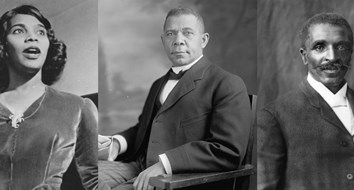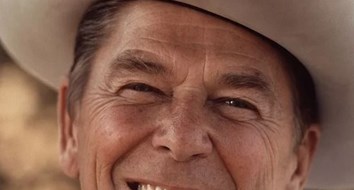At the time this article was first published in 1988, Mr. Reed was the President of the Mackinac Center for Public Policy in Midland, Michigan, and chief economist for James U, Blanchard & Company, based in Jefferson, Louisiana. He is currently president of the Foundation for Economic Education.
“What nobody owns, nobody takes care of.” That’s a fundamental rule of human behavior and, at the same time, a powerfully favorable commentary on the institution we call “private property.”
When something is owned by “everybody,” it is often not cared for, either. The worst cases of pollution, for instance, tend to be on lands or in waters that supposedly we all own in common. That says something powerful about “public” property.
In a recent annual report, the President’s Council on Environmental Quality put it this way: “Unowned resources are more likely to be over-exploited than resources privately owned and managed, since a private owner directly benefits from the preservation and maintenance of such resources and is thus more likely to act as a responsible steward.”
These points are so fundamental to human nature and experience that they ought to be cast in stone and enshrined as natural law. Yet, when it comes to conserving America’s natural environment, many people believe that government supervision of “public” property is the only game in town. The truth is that many of the very best examples of environmental preservation are the products of private groups and private property.
In the United States, more than 400 major private conservation organizations are actively engaged in saving natural things and places.
Many other enterprises which do not have conservation as their principal objective, such as hunting ranges, end up conserving and enhancing Mother Nature as an important by-product of their activities.
What follows are thumbnail sketches of eight of these groups. That’s not many, but those cited here are among the largest and/or most fascinating of the lot. All of them bear eloquent testimony to the general principle that private property does indeed serve the public good.
The Nature Conservancy
Sometimes referred to as “the real estate arm of the conservation movement,” The Nature Conservancy (TNC) is the biggest outfit in the preservation business. Headquartered in Virginia, it is organized as a nonprofit corporation whose resources, its literature states, “are devoted to the protection of ecologically significant areas and the diversity of life they. support.”
TNC boasts current assets worth about a half a billion dollars, including 528,000 acres it owns outright. It manages conservation projects on more than three million acres in all 50 states, Canada, the Caribbean, and Latin America. Dues-paying membership now exceeds 350,000.
This burgeoning giant was founded in 1951. That’s when its first volunteers worked out of their homes to raise funds for purchasing the Mianus River Gorge, an area of hardwood forests 30 miles from New York City. Thanks to aggressive fundraising and private gifts from landowners, the Gorge preserve has grown from 60 to 400 acres.
Businesses annually donate millions of dollars as well as thousands of acres which the organization’s experts identify and approve as being of genuine ecological significance. Foundations and individuals are significant donors, too. Most of the rest of TNC’s vast resources are raised by way of members’ dues and gifts and a highly successful fundraising network. Though it frequently assists government agencies and sometimes even donates land to them, TNC gets no government money.
While radical environmentalists noisily lobby Congress for more “public” land, TNC goes about the preservation business in a quiet, capitalist fashion. Its approach has been likened to that of a cross between Adam Smith and Henry David Thoreau. After Consolidation Coal Company donated nearly 8,000 acres in central Illinois in 1984, one of that company’s executives was quoted as saying of INC: “They acquire land for, I believe, a very good purpose, but do so within the framework of the free market system. They do not seek to deprive individuals or businesses of their just property rights.”
In the October 20, 1986, issue of Sports Illustrated, author Bil Gilbert described the way TNC operates:
If, for example, TNC operatives hear of a plan to build a ski resort on a mountain that provides the last good habitat for a certain warbler, some rarish plants and an endangered beetle, they will view this with great alarm. However, they will not spring into action by issuing antidevelopment manifestos or bringing down public opinion or courts on the would-be seller and buyer. Rather, TNC agents will simply commence conventional commercial negotiations to buy the tract outright before the ski people do. If successful they will then exercise their property rights by leaving the place to the birds, plants and bugs and start looking to cut the next real estate deal.
Projects managed by TNC chapters, field of-rices, and/or professional land stewards are in-credibly diverse. Among the hundreds of these are:
- Pine Butte Swamp in Montana: a protected wetland habitat for grizzly bear and two endangered plant species which spans 17,550 acres.
- Cache River/Bayou DeView National Wildlife Refuge: 4,398 acres of swamp and bottomland hardwoods, home for the nation’s largest concentration of wintering mallards.
- Pelekunu Valley in Hawaii: 5,759 acres of the state’s most pristine rain forests, sea cliffs, and free- flowing streams—a purchase made possible by a single anonymous gift of $1.5 million.
- King Clone creosote brush in California: 17 protected acres, home to an 11,700-year old ring of brush believed to be the oldest living organism on earth.
Some 3,200 species of plants and animals plus 1,700 communities of them are seriously threatened and require special husbanding, according to TNC estimates. All of them could be preserved if about 7.5 million more acres were acquired as sanctuaries. At today’s market value, it’s been estimated that would cost more than $3 billion, but it’s a goal the organization nonetheless hopes to achieve by the end of the century.
Clifford Messinger once worked for another conservation outfit which spends much of its time lobbying for government to do the job. Disenchanted with that approach, he left and later joined TNC’s Board of Directors. He explained his switch this way: “I began to realize that you can win a victory today in Congress but lose it eight years later. But if you actually own the land, it will stay protected.”
That cogent remark not only summarizes the philosophy and work of The Nature Conservancy, but it underscores a key advantage of private over public property, too.
The National Audubon Society
Second to TNC in terms of land holdings, The National Audubon Society is now in its 82nd year and boasts 500,000 members. Named for famed naturalist and wildlife painter John James Audubon (1785-1851), its first members joined together to protest cruelty to birds. That original interest has long since broadened into a multi-million dollar annual campaign on behalf of all wildlife and its natural habitat.
With a 30 million-dollar budget and a staff of 50, the nonprofit Audubon Society is a powerful force for conservation research and education. It regularly hosts ecology camps and runs environmental education centers, research stations, and 80 sanctuaries around the country. Its youth programs, designed to instill in youngsters a deep appreciation for natural things, last year involved 120,000 children in close to 4,000 classrooms. Its widely acclaimed magazines and television specials have brought a superb new dimension in wildlife education to millions of Americans.
Audubon’s field programs include protection of marshes, bogs, wetlands, prairie potholes, hardwood bottomlands, endangered animal species and their natural habitats in all parts of the country.
Auduboners as a whole tend to be more politically active than members of The Nature Conservancy, but that often puts them on the same side of public issues as the most diehard defender of the free market. The scaling back of the federal government’s controversial Garrison Diversion project in 1986 was perhaps their greatest political victory.
Garrison was a billion-dollar boondoggle designed to move the Missouri River eastward in order to irrigate less than one per cent of North Dakota land for the purpose of growing primarily surplus crops. As originally planned, it was to involve a 3,000-mile tangle of canals, pipelines, and reservoirs, providing each affected farm with what amounted to a $700,000 subsidy while destroying 70,000 acres of prairie wetlands and waterfowl habitat.
For years, Audubon fought Garrison in the courts and in Washington. Finally, in 1986, Congress voted to curtail the project substantially, thereby saving countless ducks, geese, shorebirds, gulls, and other animals from an unnecessary, State-induced demise.
Perhaps none of Audubon’s efforts teaches a greater lesson than its Paul J. Rainey Sanctuaryin the coastal marsh of southwestern Louisiana. The 26, 171-acre preserve is totally owned and operated by the Society and is the winter home of tens of thousands of ducks, snow geese, coots, and wading birds. It also supports a thriving population of raccoonS, otters, muskrats, white-tailed deer, alligators, and several species of both saltwater and freshwater fin and shellfish.
What’s significant and instructive about the Rainey Sanctuary is Audubon’s policy of allowing oil and natural gas wells to be drilled within its boundaries. By contract with private companies, all exploration, drilling, and production activities at Rainey are strictly monitored by Audubon. There has never been a blowout, an oil spill, or any measurable environmental damage to the 400 acres affected. All clean-up activities by the energy companies are meticulously scrutinized to ensure that the marshlands are properly restored. The arrangement has even generated revenues for Audubon to use for managing the preserve and for acquiring more. land. Chalk up another one for self-interest, the profit motive, and private property.
Sea Lion Caves
Steller sea lions once swarmed along the Oregon coast by the thousands. Then, in the largely mistaken belief that the creatures were harming the salmon and tuna populations, commercial fishing interests prevailed upon the State of Oregon to declare a bounty on them. In 1920, the state legislature even instructed the State Fish Commission to exterminate the entire population of both seals and sea lions. In just the first year of the program, the top seven bounty hunters collected $5,000 each from state taxpayers at $5.00 per animal.
Other private individuals, alarmed at the slaughter, came to the rescue. Their lobbying eventually succeeded in ending the bounty and, in 1972, making the indiscriminate killing illegal altogether. But primary responsibility for saving the seals and sea lions of coastal Oregon must go to a private, for-profit organization called Sea Lion Caves, Inc.
Located just north of Florence, Oregon, Sea Lion Caves is a remarkable geological site—America’s largest sea cave and the only mainland rookery (breeding area) of the Steller sea lion. A 215-foot elevator takes visitors for just $4.00 each down into a large, domed cavern connected by three natural passages to the open sea. In a breathtaking scene, as many as 600 of the animals cast occasional glances at awestruck tourists.
The 125 acres around Sea Lion Caves also serve as an important refuge for sea birds. Development has been purposely kept to a minimum by the owners to assure the area remains close to its natural condition. It has become a highly valued research location for naturalists, scientists, and students of geology, ornithology, marine biology, and natural history.
In 1977, Oregon Governor Robert Straub wrote that the property “was one of Oregon’s great tourist attractions as well as a great and natural resource.” He also praised it because it showed that, in his words, “a private organization can, by using a combination of common sense and good management, develop and protect such a great resource—and still show a profit.”
The owners themselves, representing the same three families which first started the operation in 1932, make a claim with which few naturalists would disagree: “Had not the area been privately owned, developed and pro tected, especially in the early days when the State of Oregon paid a bounty for slaughtered sea lions, the Sea Lion Caves area would undoubtedly be devoid of sea lions and other marine life, and the natural wonder would probably not exist today.”
North Maine Woods
A 2.8 million-acre tract of almost entirely private commercial forest and recreational land in northwestern Maine is attracting recognition from all over the Eastern Seaboard. Known as North Maine Woods, Inc., it has been described by the Council on Environmental Quality as “one of the most complex and innovative programs of multiple use of private lands for commercial timber production and public recreation in the country.”
Though the principal purpose for the land was to husband and harvest valuable timber resources, North Maine Woods is open to recreational users. Its twenty owners formed the nonprofit corporation in 1974 to accommodate that second purpose. They regularly fund deficits between visitor fees and operating expenses. The owners include Boise Cascade • Corporation, Great Northern Paper Company, and Irving Pulp & Paper, Ltd. The State of Maine owns a mere 5 per cent.
All the roads in the area have been privately built. Visitors use them to gain access to 123 camping areas, 11 canoeable rivers, and 252 lakes and ponds. Measures to ensure the safety of the 70,000 visitors each year have helped produce a spotless liability record.
Providing public recreation has been a costly undertaking for the private landowners, but revenues are now finally approaching expenses. Other landowners in the state have expressed interest in having the North Maine Woods organization manage their lands, too.
Extraordinary care for the land and its resources while accommodating recreational tourists has become a hallmark of the operation. This nurturing of the property’s long-term integrity and productivity is a natural result of the private owners’ direct financial interest in the capital value of the land.
People who make their living from the woods there go about their business near where others come to relax and enjoy the outdoors. Together they see to it, as North Maine Woods’ literature puts it, “that, while they take forest products, fish, wildlife, and pleasure from this great region, they take nothing that will make it any less in the future than it is today.”
Deseret Land & Livestock
Situated on 201,000 acres in five counties in northeastern Utah, Deseret Land & Livestock is a private, for- profit corporation owned by the Church of Jesus Christ of Latter-Day Saints (the Mormons). Its mission statement is “to make a profit, while at the same time improving the land resource and sharing the knowledge learned in the process,” says General Manager Gregg Simonds.
Revenues are generated through a seed farm operation and a hunting range open to the public, but the 12,000 cattle raised on the land are the focal point of Deseret’s profit-seeking activities.
What really makes Deseret an extraordinary place are the management’s innovative techniques for nurturing the domestic livestock herd and enhancing the wildlife population simultaneously. The cattle are raised to “fit in” and complement the natural environment.
The amount of time the cattle are allowed in each of the ranch’s more than 100 pastures is carefully limited. When it comes time to move them, a pickup track with a police siren at the lead is all that’s necessary because the cattle know that the sound of the siren means a new, fresh pasture. The practice allows the used pastures to recover quickly.
Conventional wisdom used to teach that cattle and wildlife are competitors, but Deseret’s wildlife operation has proven that they can be entirely compatible—and profitably so. Large herds of elk and deer roam the ranch and are carefully culled each year by a limited number of fee-paying hunters. Prime fawning grounds are off- limits to livestock during critical times of the year. So successful has the program been that some of the ranch’s elk are being transplanted to public lands to improve hunting there.
Additionally, dam-building beavers have been introduced into areas badly scarred by erosion. Ducks take advantage of the numerous reservoirs and catch basins established for cattle watering. And the ranch is moving into a new area—fisheries. It is establishing a natural hatchery for cutthroat trout.
Increasingly, Deseret’s innovative methods of making good neighbors of livestock and wildlife are attracting national attention. Its example is likely to be imitated with ever greater frequency.
The remaining three groups are in a slightly different category from the previous five. They own little, if any, land. Private property incentives may seem to be a minimal factor in explaining the success of their projects, since much of what they do involves stewardship and improvement of public properties. However, their conservation work is private initiative in action, financed by private donors, all designed to rescue endangered lands, waterways, and wildlife from public neglect or mismanagement.
Ducks Unlimited, Inc.
For fifty years, the private, nonprofit group known as Ducks Unlimited has raised funds and conducted programs to restore and develop wetland habitat for wild geese and ducks. Founded in the depression year of 1937, DU has taken in nearly $400 million from gifts, dues, and fundraisers. Its 600,000 members and 3,700 chapters are scattered all over Canada, the United States, and Mexico.
DU has built 3,200 habitat projects and reserved some four million acres of wetlands crucial to the survival of waterfowl. Rather than purchasing the land outright, it has cooperated with governments and individual landowners to secure long-term leases and easements. Following this pattern, DU implemented in 1984 a massive habitat construction program in a five-state area in the U.S. which accounts for nearly 30 per cent of the continent’s waterfowl production.
Because it is an international organization, DU can cultivate the natural environment for birds beyond the borders of any one country. As one of its informational brochures states,
Waterfowl neither adhere to geographical boundaries, nor do they respond to the political climates encountered along their migration routes. Because of this, and because of DU’s unique ability to reach beyond U.S. borders, North American waterfowl are cared for throughout their continental migra-tions- something the Federal government has not been able to accomplish.
Of the acres DU has conserved, 3.8 million are in Canada, 410,000 are in Mexico, and 136,000 are in the United States.
Trout Unlimited, Inc.
Similar in structure to DU, nonprofit Trout Unlimited is the world’s largest citizens’ conservation organization dedicated to the protection and enhancement of cold-water fisheries.
In 1959 on the banks of Michigan’s Au Sable River, 15 people formed TU. It now has 450 chapters and more than 50,000 members throughout the United States.
TU’s activities on behalf of trout and other fish include public education programs, water quality monitoring, watershed protection, restoration of both damaged stream sections and the biological carrying capacity of entire streams, bank stabilization, and stocking of young fish in various water bodies.
The organization’s “Embrace a Stream” program has funded over 135 local and regional cold-water conservation projects since 1982.
Conservation International
In July 1987, a new private, nonprofit, Washington, D.C.-based organization known as Conservation International made headlines all over the world. With funds provided by private donations and with Citicorp Investment Bank acting as its purchasing agent, the outfit bought $650,000 of the Bolivian government’s $4 billion external debt, and then promptly forgave it. In return, Bolivia committed itself to setting aside 3.7 million acres of its public lands as conservation areas in its exotic Amazon basin.
This first “debt for nature” swap may well establish a pattern for reducing a major portion of the Third World’s financial obligations. Already, CI and a number of other groups are negotiating to do the same thing again in areas where government policies have ravaged environmentally sensitive lands. The practice still leaves the properties in the hands of the State, but at least they are no longer fully subjected to destruction by uncaring “public servants.”
In Bolivia, Conservation International will regularly monitor the government’s efforts and provide the technical support needed to manage the site. High on its list for protection are the region’s 13 endangered animal species and more species of birds than in all of North America.
CI is only a year and a half old but has already shown in a dramatic way that creative, private initiative can rescue what governments have callously jeopardized.
A Fruitful Partnership
So it is that private people and private property can be the best of friends to Mother Nature. Indeed, it is becoming increasingly apparent inside and outside the conservation movement that the incentives inherent in privatized affairs are potent motivators that many properties now “publicly owned” could sorely use. In any event, as this sketch of just eight groups suggests, it would be a grave mistake for anyone to assume that those doing the most or the best to conserve our natural environment must be wearing government uniforms.





